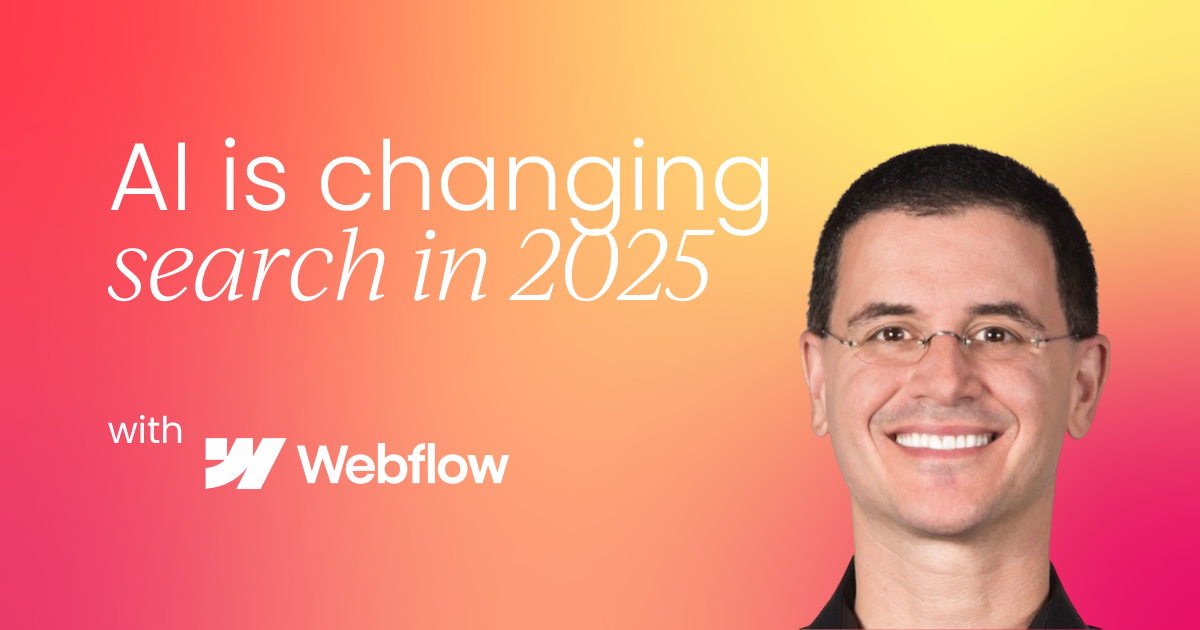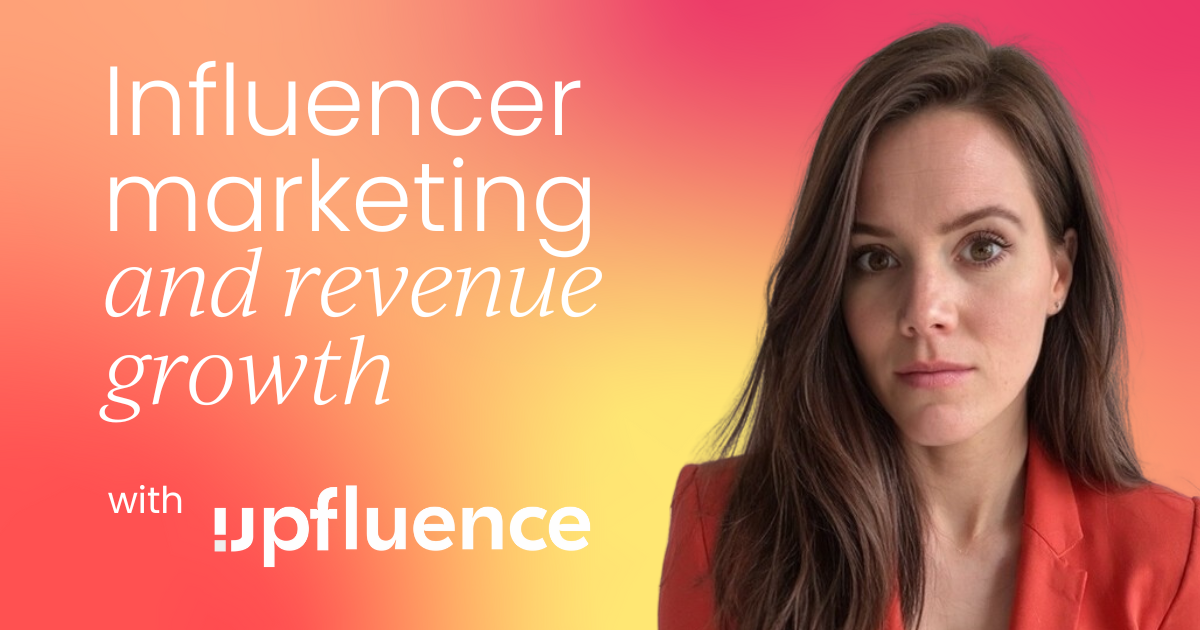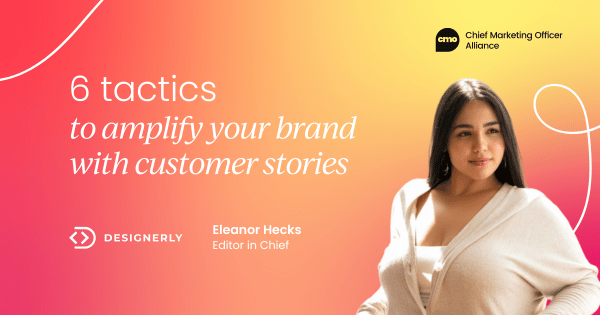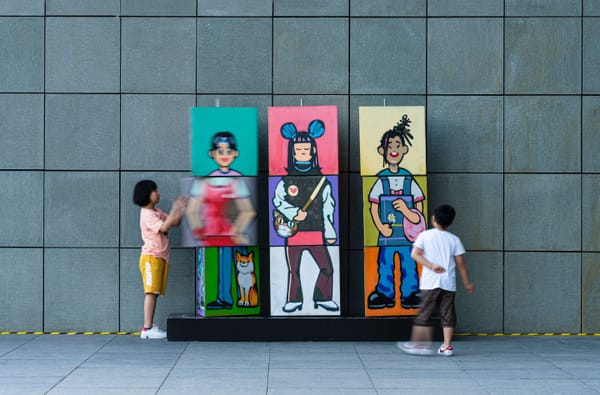In literary criticism, we often assign characters clearly defined roles within a story – the protagonist, the antagonist, the guide, and so on. These traditional character roles can be powerful tools for crafting compelling marketing narratives that truly engage audiences.
Marketing is fundamentally about forging human connections and relationships. What better way to achieve that than by structuring your brand storytelling around the archetypal character dynamics that have resonated across cultures and centuries of human storytelling?
Prefer to listen? Check out Gaston's appearance on the CMO Convo Story Masters series 👇
The role of change: The hero’s journey
Regardless of specific character roles, change is the crucial constant driving any compelling story. Change is the most important element for powerful storytelling, and it's also vital for authentic character development.
My advice is to craft characters that undergo meaningful transformation over the course of the narrative. The initially brash character should show some vulnerability by the end, while the timid persona demonstrates newfound strength and resilience. There must be an element of change, or the audience won't be able to forge an emotional connection with the character.
However, I must emphasize that this change can't feel abrupt or unmotivated. You can't simply have characters transform at the flip of a switch. Their evolution must organically fit the narrative groundwork you've laid and align with how the character was originally established. Otherwise, it will come across as contrived and unrealistic.

Brands as characters
Just as we perceive vibrant personalities in the people around us, audiences also view brands through the lens of distinct characters. The goal is for people to think, "That brand is such a character!" This shows you've imbued your brand with a distinctive identity comprised of relatable personality traits.
Yet brand personalities, like human personas, require room for growth and development. Give your brand clearly defined traits, but allow it to naturally evolve over time. You can't have a brand's perceived personality shift overnight or act in a way that feels jarringly out-of-character. Audiences won't find such inorganic changes believable or trustworthy.
Making an impression
Whenever it comes to brand development, you want people to understand who you are and what you do in no more than two seconds. If your character is not well defined, it's going to take a lot of effort from that potential customer to understand who you are, and they're not going to do it. It's like making connections in the real world you have just a few seconds to make a good impression.
Finding authenticity
While focus groups can sometimes help you refine your messaging, I caution against allowing them to determine your brand's entire personality. The danger is that you'll aim to please everyone and end up feeling flat and inauthentic as a result. Instead, I recommend allowing the brand identity to emerge organically from the company's fundamental purpose and the authentic personal stories of the founders. Then, carefully position that identity in a way that resonates with current cultural trends and what your target audience cares about.
Brand personality walks a delicate balance between who you are as an organization and what your audience cares about – you need to find that sweet spot.

Casting the protagonist
When shaping a marketing narrative, the brand should never position itself as the central protagonist. This narrative mistake, which I see all too often in marketing, undermines the audience's ability to emotionally invest in the story. The protagonist should be the customer or user – in other words, your target audience.
People are far more likely to connect with a human character they can relate to, like an actual customer. The story should focus on amplifying those customer voices and journeys, with the brand playing a supporting, ally role.
Identifying the antagonist
For the protagonist's journey to feel high-stakes and compelling, the narrative must have a clear antagonistic force to overcome. The antagonist represents the obstacles or challenges standing in the protagonist's way. What is this character striving against or driving towards?
Crucially, the antagonist doesn’t need to be a some malicious, villainous entity. Often, the most powerful antagonists are internal – representing the character's own doubts, fears, or setbacks to transcend.
Just look at Headspace’s example – in their brand stories, the antagonist is the overarching mental health crisis and anxiety their customer-protagonists face. Meanwhile, Headspace itself is simply the supportive ally helping those protagonists defeat their inner antagonists.
The brand as an ally on the journey
While not the central hero, the brand can serve a vital ally or guide role in facilitating the customer-protagonist's journey. I encourage thinking creatively about how to bring this supportive relationship to life.
Being the guide doesn’t mean you have to be in the background. Memorable allies and mentors in classic films and literature are often richly drawn characters with distinctive personalities and unorthodox teaching styles.
For instance, the martial arts mentor Mr. Miyagi in The Karate Kid is beloved because of his unique "wax on, wax off" tutoring approach that proved transformative for the protagonist Daniel LaRusso. Wise figures like Gandalf or Obi-Wan Kenobi are extremely popular and memorable and are considered to be one of the most iconic parts of the stories they’re connected with.
Nike excels at portraying this ally archetype in an inspiring way. They masterfully elevate their customers' athletic achievements and personal struggles at the core of their narratives. The brand then inserts itself almost as a seasoned coach, helping equip the protagonist to overcome obstacles and reach new heights.
It's an empowering way to authentically integrate the brand. They're very good at positioning their customers at the center and making their achievements and struggles really compelling. The way that Nike inserts itself into those struggles and helps the protagonist overcome them is also really smart.

Examples of powerful protagonist stories
Google's "Maher's Story" about how Google Translate transformed one man's life exemplifies emotionally resonant, protagonist-driven storytelling. Not only is Maher's personal journey from conflict-torn Iraq to building a new life in America deeply moving, it's a true story drawn from the experiences of an actual user. If you're lucky enough to have such customer stories already, I advise drawing from that wellspring of authentic inspiration rather than manufacturing fictional tales.
The key to "Maher's Story" is how it maintains an unwavering focus on this man's incredible personal odyssey. You don't even see the Google logo until the very end. The spotlight is squarely on Maher recounting his journey in his own words, with Google Translate seamlessly underlying his path to personal and linguistic liberation. Only after being emotionally invested in this deeply human struggle does the story reveal how Google's technology served as a catalyst.
This approach allows the audience to first forge an authentic connection and share in the visceral emotion of Maher's experience. That culminates in a profoundly moving realization of the empowering role Google played, leaving viewers inspired by what their innovation made possible. You feel inspired and emotionally connected.
By grounding marketing stories in meaningful character arcs anchored in real human truths, brands can transcend promotion and forge lasting emotional bonds with their audiences. You'll leave them feeling inspired and forging a deeper personal connection with who you are as an organization. Isn't that the ultimate goal of storytelling?
Avoiding stereotypical pitfalls
While these traditional character roles can provide useful structural guidance, I caution against being too stereotypical or simplistic in their application. We've evolved beyond one-dimensional archetypes like a lone hero protagonist pitted against an evil antagonist force. Those outdated character clichés feel quite naive and wouldn't resonate with today's more sophisticated audiences and cultural sensibilities.
Instead, apply these time-honored storytelling principles with nuance. Develop multilayered characters who defy expectations and subvert tropes. Explore complex internal antagonists rather than cartoonish external forces. Above all, strive for an authentic emotional core that strategically immerses your brand in a way that feels innovative and culturally relevant.
Conclusion
Crafting compelling brand narratives is ultimately about forging authentic human connections. By imbuing your brand with a distinctive personality and placing it within a rich character-driven story, you create something audiences can profoundly relate to on an emotional level.
The path to achieving this lies in the ancient storytelling archetypes and dynamics that have transcended cultures for centuries - the hero's journey, the catalyzing mentor, the inner doubts personified as the antagonist. Leverage these proven narrative principles, but apply them with nuance befitting modern sensibilities.
Resist trite stereotypes and one-dimensional tropes. Instead, develop multilayered characters that defy expectations and explore complex interior realms. Place your customer squarely at the heart of the story as the central protagonist, with your brand playing the trusted ally helping facilitate their personal transformation and growth.
Draw from the raw, real-life experiences of your users to keep the emotional core grounded in relatable human truths. Only then can you reveal the empowering role your brand plays as the catalyst for meaningful change. When executed with care, this allows your audience to forge a visceral personal connection to who you are as an organization.
In today's fragmented attention economy, harnessing the universal power of archetypal character storytelling transcends promotion. It's how you leave your audience feeling inspired and uplifted, having taken them on a profoundly resonant emotional journey. It solidifies enduring brand loyalty and advocacy in a way that bezels and taglines never could.
Embrace the eternal wisdom of rich character narratives, and your brand stories will be unforgettable. Your audiences will see themselves reflected in each persona, forging the type of deep emotional bond that is marketing's highest ambition. For isn't that the ultimate aspiration - to become that indelible "character" imprinted on the hearts and minds of the people you're trying to reach?
FAQs
Q: Who are the characters in marketing?
A: The characters in your marketing stories should follow the classic storytelling structure of protagonist, antagonist, and guide/ally. Your brand cannot be the protagonist – that's a common mistake. The protagonist needs to be your customer or user, the person you are trying to reach and connect with emotionally.
The antagonist is the problem, challenge or obstacle that your protagonist is facing. This could be an external force like a competitor, or it could be an internal struggle like anxiety or lack of motivation. The antagonist creates the conflict that drives the narrative forward.
Your brand should position itself as the ally or guide that helps the protagonist overcome the antagonist. Just like Obi-Wan guiding Luke or Mr. Miyagi mentoring Daniel, you need to show how your brand provides the tools, knowledge or inspiration for the protagonist to succeed on their journey.
Other potential characters could be mentors who provide wisdom to the protagonist, or allies who team up with your brand to support them. But the core characters are protagonist, antagonist, and your brand as the trustworthy guide.
The key is to make sure your stories are protagonist-driven, not brand-centric. Put your customer at the center and make their struggles and triumphs the focal point, with your brand playing a supportive role. That's how you'll forge deep emotional connections.
Q: What is a brand's character?
A: A brand's character is essentially its personality – the distinctive traits and qualities that define how it shows up in the world. When you have a well-developed brand character, people should be able to describe your brand using human personality characteristics. "Oh, that brand is bold and irreverent" or "They come across as warm and nurturing."
Just like with human personalities, your brand character needs to be nuanced and allow room for growth, but it also needs some clear, recognizable core traits. If I ask people what first comes to mind about a brand and they stumble, unsure of how to articulate its character, that's a red flag the personality needs more definition.
At the same time, you can't just rely on focus groups or A/B testing to fabricate an identity. That often leads to a flat, one-dimensional personality crafted to appeal to the masses instead of standing for something bold and distinctive. Your brand's personality should be an authentic negotiation between your company's values and what resonates with your core audience.
When developing the character, spend time understanding the founders' motivations for starting the business. Their story and driving purpose is a key part of establishing an identity with substance behind it. But don't let it be purely founder-centric either. Connect that inner voice with the relevant cultural trends and what your audience craves.
The most compelling brand characters strike a balance – rooted in an honest sense of self while staying tuned into their audience's needs and desires. And they evolve naturally over time without wildly erratic or insincere pivots that break the audience's trust.
Ultimately, you want your brand to feel like "a character" in people's lives and stories. A personality they understand, identify with, and develop a relationship with based on shared values and experiences. That's the hallmark of a truly resonant brand character.
Who are the main characters in your brand stories? How do you ensure the customer remains the protagonist? Share your insights with a global network of CMOs and marketing leaders on the CMO Alliance Community Slack Channel.

Want to take your storytelling skills to the next level? Our Storytelling Certified: Masters Course might be just the thing you need to start a new chapter. Find out more.






.png)









 Follow us on LinkedIn
Follow us on LinkedIn





